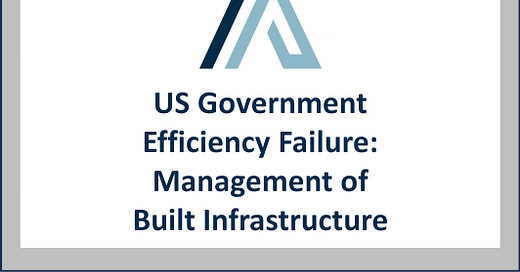The National Strategy for the Efficient Use of Real Property: Part 3 - the What
US Government Efficiency Solution for Real Property Management Miniseries
Introduction
This miniseries calls for the U.S. government to establish a National Strategy for the Efficient Use of Real Property. Part 1, How to Generate a National Strategy, detailed the process fo…
Keep reading with a 7-day free trial
Subscribe to AMP Newsletter to keep reading this post and get 7 days of free access to the full post archives.




